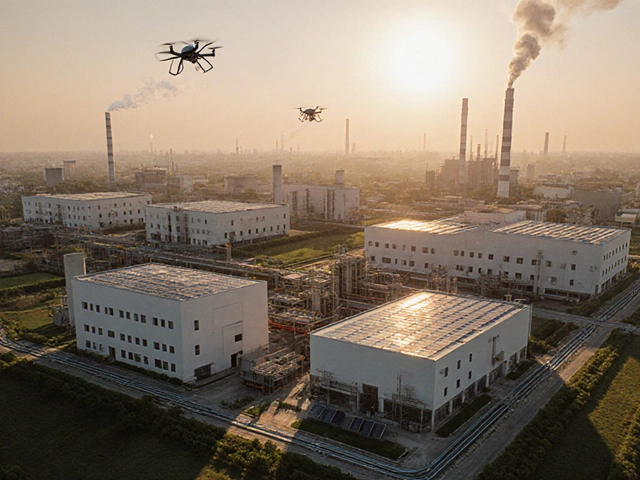Industry Growth: Key Trends and Opportunities in 2025
India’s industrial landscape is buzzing with change. New pharma hubs, smarter factories, and untapped markets are popping up fast. If you want to stay ahead, you need to know what’s moving, why it matters, and how to act on it.
What’s Fueling Growth Across Sectors
First, the pharma scene is reshaping itself. Baddi leads in sheer capacity, Hyderabad shines in API and vaccine research, while Gujarat dominates exports. This three‑city dynamic creates jobs, attracts investment, and pushes related services like logistics and packaging.
Second, the factory system’s economic edge can’t be ignored. Mass production cuts costs, makes products affordable, and opens doors for small players to scale. The classic five M’s – Man, Machine, Material, Method, Measurement – are now backed by data analytics, so even a modest plant can hit high efficiency.
Third, low‑competition industries are popping up. Sectors such as niche textile manufacturing, sustainable furniture, and specialized food processing show bright profit margins because few firms are fighting for the same customers. The 2025 market data shows these areas outpacing traditional heavy‑industry growth rates.
Finally, government schemes are giving factories a boost. Tax incentives, easy credit, and skill‑development programs help new manufacturers clear red‑tape quickly. That’s why start‑up guides for small‑scale industries are seeing a surge in downloads.
Practical Steps to Capitalize on the Momentum
1. Pick a hot location. If you’re eyeing pharma, consider setting up a support unit near Baddi or Hyderabad to tap into existing supply chains. For furniture, the booming Indian market rewards proximity to major real‑estate projects.
2. Use the 5 M framework to audit your operation. Check if you have the right people, reliable machines, quality material, proven methods, and real‑time measurements. Small upgrades in any of these can lift output by 10‑15%.
3. Target low‑competition niches. Look at market reports that list “most in‑demand products in 2025.” Items like eco‑friendly textiles or specialty food items often need only modest capital but deliver high returns.
4. Leverage government support. Apply for the latest Make in India grants or state‑level subsidies. The paperwork can feel heavy, but a short checklist (license, land, environmental clearance) keeps you on track.
5. Keep an eye on global rankings. The United States, China, and Europe still lead in total output, but India’s share is rising fast. Align your product roadmap with what global buyers need – for example, API manufacturing for vaccines or high‑quality synthetic textiles for export.
By focusing on these five actions, you turn broad industry growth into a concrete roadmap for your business. The next few years will decide who rides the wave and who watches from the shore.
What Drives Plastic Production: Major Industry Influencers
Plastic manufacturing is a colossal industry with various contributors driving its expansive growth. From petrochemical giants to consumer goods firms, the industry is complex yet intertwined with our everyday lives. Understanding these contributions is key to addressing environmental challenges and finding sustainable alternatives. This article delves into the major forces shaping the plastic world.
Read More




